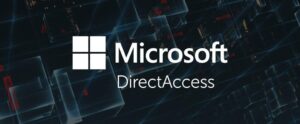Finding the right fit in the world of internet service providers (ISPs) depends on your specific needs and priorities. If seamless, secure, and dedicated internet connectivity for businesses is your top concern then Direct Access might be the answer you’ve been searching for.
But what exactly is Direct Access, where is it available and how does it stack up against traditional ISP offerings?
This article delves into the unique world of Direct Access exploring its history, functionalities, benefits, and potential drawbacks and ultimately equipping you with the knowledge to decide if it’s the right path for your organization.
About Microsoft Direct Access
The concept of Direct Access emerged within the Microsoft Windows Server ecosystem aiming to bridge the gap between traditional VPN connections and constant, unfettered internet access. While VPNs offered secure remote access, they also introduced complexities and performance limitations.
Direct Access sought to rectify these issues by enabling a seamless, always-on connection for authorized users, directly integrating them into the corporate network as if they were physically present within the office. This technology first appeared in Windows Server 2008 R2 and has evolved with subsequent iterations offering increasingly sophisticated features and security protocols.
Direct Access utilizes a unique blend of technologies to achieve its secure and seamless connectivity. Here’s a simplified breakdown:
Client Configuration: Authorized user devices are configured to connect to the corporate network directly over the internet.
Tunnel Establishment: When the user attempts to connect, a secure tunnel is established using protocols like IPsec and IPv6 for advanced security.
Authentication: User credentials are verified through Active Directory or other authentication mechanisms.
Network Integration: Upon successful authentication, the user device gains access to the corporate network resources as if it were physically connected onsite.
Why Consider Direct Access for Your Business?
Direct Access offers several advantages over traditional VPN solutions making it a compelling option for businesses seeking enhanced connectivity and security:
Always On Connection: Eliminate the need for manual VPN connections ensuring users have instant access to critical resources anytime, anywhere.
Improved Performance: Bypassing VPN servers reduces latency and improves overall network performance, especially for bandwidth-intensive applications.
Enhanced Security: Advanced authentication protocols and network segmentation ensure only authorized users gain access mitigating security risks.
Simplified Management: Centralized configuration and automated enrollment streamline IT administration and reduce management overhead.
Reduced Costs: Eliminating the need for dedicated VPN hardware and minimizing resource usage can lead to cost savings in the long run.
Limitations of Direct Access
While Direct Access offers numerous benefits, it’s important to acknowledge potential drawbacks before making a decision:
Hardware Requirements: Client devices need specific hardware and software configurations to support Direct Access functionality.
Complexity: Implementing and managing Direct Access requires technical expertise, potentially necessitating additional IT support.
Security Considerations: While secure, Direct Access introduces a new access point to the corporate network requiring careful planning and security measures.
Limited Availability: The technology is primarily available within the Microsoft Windows ecosystem, potentially limiting compatibility with some devices.
Where Can You Utilize Direct Access?
Direct Access is primarily available for organizations utilizing Microsoft Windows Server operating systems. Its reach depends on your server infrastructure and client device compatibility. While not a substitute for a global ISP, it can provide secure and seamless connectivity for remote teams and distributed offices within your network infrastructure.
Costs to Expect with Direct Access
The cost of implementing Direct Access depends on several factors including:
Server licensing: Licensing costs for Windows Server operating systems with Direct Access functionality.
Client configuration: Costs associated with configuring client devices to support Direct Access.
IT support: Potential need for additional IT expertise to manage and troubleshoot Direct Access deployment.
Security measures: Implementing additional security protocols might incur additional costs.
While not offering specific pricing structures, this article emphasizes the importance of evaluating your individual needs and considering the total cost of ownership when making a decision.
Is Direct Access Right for Your Business?
Ultimately, the decision to employ Direct Access hinges on your specific business needs and IT infrastructure. If your organization utilizes Windows Server environments, has geographically dispersed teams, and prioritizes secure, always on connectivity then Direct Access can be a valuable solution.
However, carefully consider the technical requirements, potential drawbacks and overall costs before taking the plunge.
Direct Access offers a compelling solution for businesses leveraging Microsoft Windows Server environments. Its advantages in performance, security and user experience make it a strong contender for organizations seeking to empower remote teams and enhance network management. While potential limitations and costs require careful consideration, Direct Access holds immense potential as technology continues to evolve and integrate with cloud and security advancements.
Evaluating your specific needs and conducting a thorough cost benefit analysis will guide you in determining if Direct Access is the right path towards empowering your organization’s digital future.

